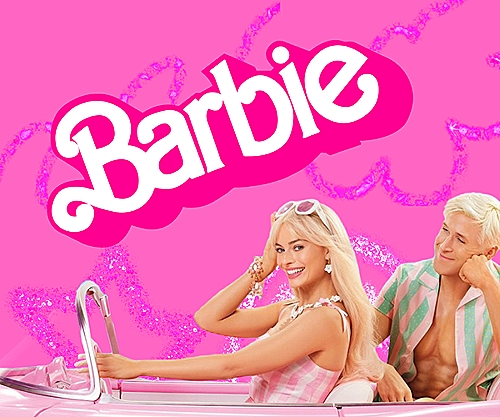The Barbie Movie: A Student’s Perspective
Written by Nadia Krill
Barbie was set up to be a sensational hit, pulling people in through dazzling PR stunts and savvy marketing. Director Greta Gerwig created a fictional universe of pink where Barbies ran the world, mimicking Barbie’s popularity with children. Kens were viewed as accessories to the Barbies and their only job was “Beach,” whereas the Barbies were lawyers, doctors, scientists, etc. I was enticed by the movie when it began to pop up on my timeline and purchased tickets to view it for the Saturday after its release.
Before the movie started, people of all ages and genders began to pour into the theater. Most people, myself included, were wearing pink. There was a silent solidarity which made the environment comforting and warm. The movie started out by introducing the original 1959 Barbie and then panning to the main character – “Stereotypical Barbie” – in her Barbie Dream House. The actress Margot Robbie embodied everything stereotypical Barbie stood for and her physical movement resembled that of a doll’s. The set was purposely set up to represent the life of a Barbie doll, including a waterless shower and a fridge which opened to a sticker instead of shelves. The set alone demonstrated the care that went into making the movie. My mom and I spotted different Barbie Dream House features even though we grew up in separate generations with separate Barbie Houses. Greta Gerwig did an amazing job making a movie that women of all ages could relate to.
The first part of the movie is based in Barbie Land, which is run by the Barbies. Everyone in a leadership role is a Barbie. The Kens wait on the Barbies and are there to tend to them. Many conservative critics see this as “man hating.” In reality, the purpose is to create such a powerful matriarchy, that when contrasted with our real world, our patriarchy becomes clearer. The film does a phenomenal job at opening the eyes of viewers to the sexism in our society. When Barbie enters the real world, she is shocked by being catcalled, even though most women have become desensitized after years of experiencing it. This scene is a reminder that systematic oppression is wrong and that we don’t have to settle. Additionally, when Barbie sees that the United States has only had male presidents and that many of the leadership roles are filled by men – including the people who are running Mattel – she is struck by how different everything is from Barbie Land. The movie’s stark contrast of matriarchy vs. patriarchy demonstrates how the real world contains deeply rooted systematic sexism, which negatively impacts all of us.
Barbie points out that our understanding of equality is flawed and that our society is still a patriarchy. However, the film goes farther than just pointing out that the patriarchy is flawed. It shows that a matriarchy is inherently flawed as well. The Kens try to make Barbie Land into a patriarchy, and even though they fail, they make the Barbies realize that their poor treatment of the Kens is wrong. The movie states that going forward, the Kens in Barbie Land will have the same amount of opportunity as women have in the real world. I believe that this part of the movie is very important to understanding the actual message. It is not about oppressing men, it is about creating a society where women and men are treated equally in all facets.
After watching Barbie, I began to question why Mattel allowed themselves to be portrayed poorly in the film. In the movie, Mattel is run all by men who are depicted as unintelligent. It is true that Mattel’s Chief Executive Officer is a man, Ynon Kreiz, and that there are more men on Mattel’s board of directors than women. Additionally, Mattel has partnered with brands ranging from Airbnb to Burger King to make Barbie themed items. They even released a collection of Barbies and Kens that were featured in the film. Now, they have a toy cinematic universe in the works with upcoming films like Polly Pocket and Hot Wheels. It is clear that Mattel is trying to make as much money as possible off of the Barbie movie’s success. At an age where being progressive is trendy, it raises the question: Is Mattel trying to keep up with the times for the sake of profits or are the values shown in Barbie actually being replicated inside Mattel? The movie poked fun at the company and pointed out the major criticisms of the Barbie Doll but did it in a way that did not require the company to actually change anything. However, it should be noted that Mattel has been working toward becoming more progressive. In the past few years, they have introduced more diverse dolls, responding to the criticism that Barbie dolls perpetuated an unrealistic body type.
Overall, no matter the intent behind the movie on Mattel’s part, Barbie raised awareness for the on-going struggle for women’s rights. Not only is the movie spreading an important message, it has also had incredible reach. It has already earned one billion dollars in the box office, inspiring people who normally wouldn’t have watched a film with such a feminist message.
This review has only covered a few of the many meaningful scenes and plot points. I highly recommend the Barbie movie to everyone, regardless of gender background. The movie is a fun watch and contains a message that is incredibly important in modern society.
Featured Image: Warner Brothers Picture (Edits by Nadia Krill)





Very well written!